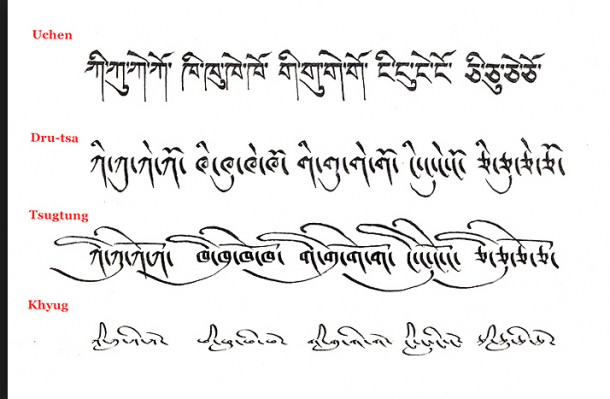The Tibetan Language.

The Tibetan language belongs to a small independent language group called-Tibeto-Burman. It bears no structural similarities with either of the main languages groups of its neighbors.Apart from occasional words that have been borrowed from Chinese and Mantras,which are recited in Sanskrit. The written Tibetan script is alphabetic and consists of thirty letters. It was invented in the seventh century by Tonmi Sambhota. a minister of king Songtsen Gampo, who based it on an ancient Indian script used for writing Sanskrit and its one of the oldest language which is the best or most appropriate language to translate Sanakrit with appropriate meaning and definitions. This a rich Tibetan art which should or ought to be preserve. Certain letters can be placed above or below others to denote particular sounds and give spelling variations for words of the same sound but different meaning. Other letters can be used as prefixes and suffixes, some of which affect the sound and some of which do not( although the precise rulers for these sounds changes vary with the dialect).Most of the Tibetan words consist of either one or two syllables. There are only three main grammatical particles,each of which serves a number of functions. The word order of a simple sentence is generally 1) Subject, 2) Object, 3)verb. The verb must be placed at the end. There are many variations of the Tibetan script. Three of the most common form are:U-Chen,Capitalized Letters,Used in printed texts and on most signs;U-Me, a more flowing cursive script often used in inscriptions and in formal letter writing and Kyu-Yig, The common cursive script used by Tibetans in non-formal letter writing and daily business.In addition to these scripts there are also ornamental scripts used for writing Sanskrit mantras. You will see the scripts on the monastery throughout Tibet.
Recent Posts
The Ultimate Guide to Tibet Tours, Travel, and Trekking Adventures
How to Explore Tibetan Culture
Exploring Lhasa:The Heart of Tibet
All Categories
- About Tibet
- book a Tibet tour
- Buddhism Practice
- Budget Tour
- China-Tibet Train
- Customized Tibet tour
- Historical Sites
- Hot Springs in Tibet
- News
- Photography in Tibet
- Tibet attraction
- Tibet Group Visa
- Tibet Motorcycle Tour
- Tibet Small Group Tours
- Tibet Tours and Tibetan Tour Guide
- Tibet Train
- Tibet Travel FAQs
- Tibet Travel Information
- Tibet Travel News
- Tibet Travel Permit Update
- Tibet Travel Prices Rises
- Tibet Trek
- Tibet Trekking Tour
- Tibet weather and climate
- Tibet Wildlife animals
- Tibet Winter Tour
- Tibetan Buddhism
- Tibetan Cultural Features
- Tibetan Culture and Poeple
- Tibetan Festivals
- What to see in Tibet



